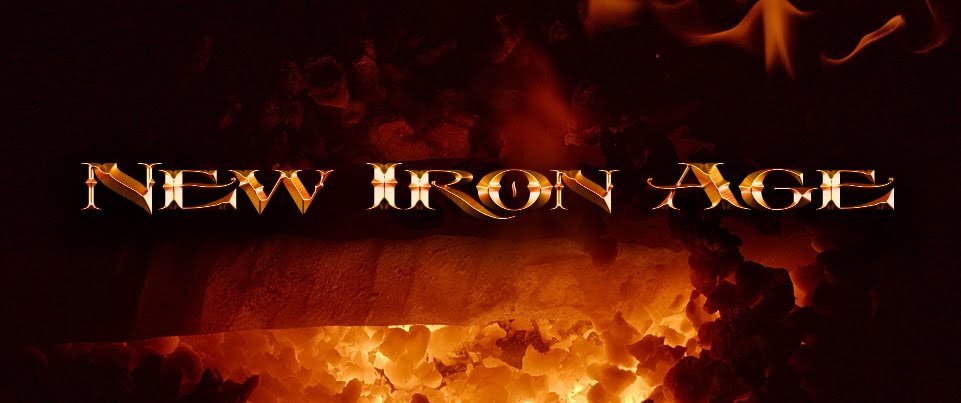If you have looked
over a shelf of secondhand fantasy books then I guarantee you have,
at some point, spotted a Raven book. There was a series of five of
them, and since they were put out by Ace they got a lot of
distribution. Also, since they are pretty much crap, they end up in
used bookstores a lot. Combine that with some nice cheesecake covers
by Luis Royo, and you have books that almost everyone has run across
at some point.
I had seen them
many, many times, and I own several, but I had never actually read
one, so I thought it was probably time to throw myself on that
grenade. After all, these books seem to pretty much wallow in the
chainmail bikini trope, so they ought to be good for some fun.
First things first,
author Richard Kirk does not actually exist. “Richard Kirk” was
a pseudonym used by two British authors: Angus Wells and Robert
Holdstock. Now, Wells was a kind of do-anything author who churned
out low-level fantasy and western novels in the 70s and 80s and wrote
under a half-dozen different names. I have never read anything of
his that I can remember, but who knows?
Robert Holdstock, on
the other hand, gave me pause. Holdstock was a rather big name in
his lifetime, and became quite a critical darling in the 80s for his
Ryhope Wood series of mythic fantasy novels. He apparently
collaborated with Wells on this first book, then wrote books 2 and 4
on his own, while Wells wrote numbers 3 and 5. Given his later
reputation, it’s not really surprising that Holdstock’s
bibliography tends to gloss over these.
I suppose the
pedigree of the authors explains why Raven: Swordmistress of Chaos
remains as readable as it is. I mean, it is crap, but it is at least
decently written, without the awkward sentence constructions or
muddled action of so many authors who try to imitate Howard or
Moorcock’s more elevated prose. You can kind of tell where
Holdstock is writing, because things becomes much more poetic and
he generates some genuinely gripping scenes. Wells’ style is more
lurid and yet has less flair.
The story concerns a
girl who escapes from slavery and then is found by a patented
“mysterious mentor” character named Spellbinder, who then sees to
her training as a warrior and guides her along towards a “destiny”
that never really gets any explanation. The problem with the story
is that it has no real shape, and reads like a series of episodes
awkwardly crammed together. Things just kind of happen, and there
never seems to be any single motivating goal or the sense that the
characters are pursuing it.
First they are
trying to get to some mystic island, which is prevented by a magical
storm which is one of the more vivid sequences in the whole book.
Then they are captured by pirates and become friends with them, head
off to find a magical skull, fight beast men, then take said skull to
another city for no stated real reason, where they are captured, have
a big battle, then destroy the skull and ride off. If it all sounds
pretty disconnected, it is.
The problem is that
the authors use the trope of the main character having a “destiny”
that her mysterious mentor will not quite explain as a way to move
the characters around the world and have them do things without there
being any real reason for them to do them. They can just handwave
and say “it’s meant to be” but that remains an unsatisfying
dodge. There is a shred of personal motivation with Raven wanting
revenge on the guy who killed her parents, but he’s not really
given a personality besides being a dick, and the final showdown is
rather bland. The book has things that happen, but no rising
tension, and certainly nothing you would call a climax. The
characters just go here, go there, do stuff, the end.
The main character
does not even provide much of the plot impetus, and is kind of along
for the ride, but there’s not any other protagonist, so for most of
the book it seems like no one is really leading the action. Raven
does not have much personality except to be sexy and fight things.
At the beginning, when she escapes slavery she is said to be “of
age” though we are given to understand she is very young, and the
rest of the book takes place after she has spent a year training in
warfare, but I think she is at most supposed to be sixteen, which
makes her later sex scenes rather questionable. This first book came
out in 1978, when standards were different, and compared to some
other books of the period *coughGORcough*
it comes across as almost progressive.
These
books are essentially a written version of those 80s big-hair
barbarian movies like Amazon
Queen or Beastmaster,
and if that is what you are down for, then go for it. There’s some
fairly explicit sex and violence, and they are better-written than
you would think. But for all that, they are aiming for cliché, and
they hit it square on, so don’t expect anything that would not turn
up in a direct-to-video movie from 1987 or a third-rate D&D game.





